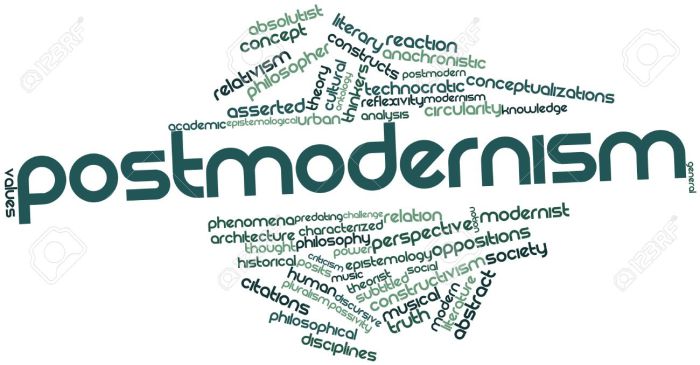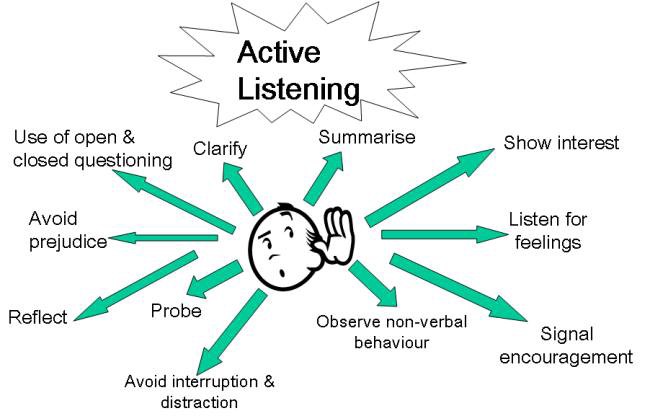Written by Steven Barto, B.S. Psy., M.A. Theology

Religion and science are two of the most significant and contentious cultural and intellectual forces known to man. Leading Christian thinkers at the time of the Renaissance used the metaphor “God’s 2 Books” as a way to illustrate allowing both science and religion to tell us about reality. Theologians delineate God’s revelation as General (the physical universe and all its inhabitants) and Special (the Bible as God’s written revelation). It was believed that we must “read” both books to understand Creation. I often use the phrase “all truth is God’s truth.” Albert Einstein remarked, “Science without religion is lame; religion without science is blind.” As a theologian and student of the Bible, I choose to study science and religion because these subjects are interdisciplinary: neither science nor religion can provide a comprehensive view of the world. We simply cannot achieve a “complete picture” without integrating these two worlds.
We know the Milky Way is a barrel-shaped spiral galaxy, one of hundreds of billions in the observable universe. It’s also our home. Like other galaxies, the Milky Way is comprised of stars and other material bound together by gravity. Scientists estimate our galaxy to contain 100 billion to 400 billion stars; a similar number of planets likely exist in the Milky Way—some of them are part of solar systems and others are free floating. In addition to stars, the Milky Way contains innumerable nebulae, which are clouds of gas and dust. The vast majority of interstellar gas is made up of hydrogen and helium. Evidence seems to suggest that material in the Milky Way orbits the center far too quickly to be held together by gravity between the orbits of visible objects. Accordingly, most of the mass of the Milky Way is made up from a form of matter that does not interact with light. Astronomers have labeled this phenomenon dark matter (1).
What is Dark Matter?
Dark matter is the name theoretical physicists give to all the mass in the universe that remains invisible. Research suggests that about 70% of the universe is composed of dark energy, while the remaining 25% is composed of a mysterious substance known as dark matter. Unlike normal matter, dark matter does not interact with electromagnetic forces. This means it does not absorb, reflect or emit light, making it extremely hard to spot. In such instances, we typically look for the “result” of the presence of dark matter. All matter around us is made of elementary particles, the building blocks of matter. These particles occur in two basic types called quarks and leptons. Each group consists of six particles, which are related in pairs, or “generations”. The lightest and most stable particles make up the first generation, whereas the heavier and less-stable particles belong to the second and third generations. All stable matter in the universe is made from particles that belong to the first generation; any heavier particles quickly decay to more stable ones. Dark matter isn’t the same thing as dark energy, which makes up some 68% of the universe, according to the Standard Model.
The prevailing theory of today’s astrophysicists identifies four fundamental forces at work in the universe: the strong force, the weak force, the electromagnetic force, and the gravitational force. The idea of a “cosmological constant” was first proposed by Einstein as a means of explaining the concept of a static universe. His formula used dark energy to balance gravity. We later determined that Einstein was wrong: rather than the universe being “static,” it is expanding at a uniform rate. Amazingly, gravity is the weakest of the four forces, but it has an infinite range. Electromagnetic force also has infinite range, but it is much stronger than gravity. The weak and strong forces are effective over a very short range, operating at the level of subatomic particles. It may sound counterintuitive, but the weak force is much stronger than gravity. Bentovish believes theoretical physics is in a state of paradigmatic crisis. The two pillars of theory for the material-causal paradigm—Relativity Theory and Quantum Mechanics—seem “inconsistent,” as up to 95% of all the energy and mass in the universe cannot be directly accounted for. Hence the terms “dark energy” and “dark matter” (2). This paradigm was shown to “replicate” or account for all major relativistic or quantum phenomena, and offered a satisfactory alternative explanation for the unexplained accelerated expansion of the physical universe. Relativity and gravity alone cannot explain this feature.
What about these “Black Holes?”
The first scientist to talk about black holes was John Michell of Cambridge in 1783. Keep in mind this was theoretical, as no one had observed a black hole in space. Michell broached the subject by explaining how gravity works: If you fire a cannon ball straight up in the air, it will eventually be slowed down by gravity; it will stop moving upwards, and then it will fall back to Earth. However, if the initial upwards velocity were greater than what is called the “escape velocity,” gravity would not be strong enough to pull the object back to the ground. Escape velocity is governed by mass, with the escape velocity for the Earth at 11 kilometers per second. Our sun is far more dense than Earth, with an escape velocity of 617 kilometers per second (3). You may have heard about this phenomenon in relation to launching rockets into space. Hawking states, “During most of the life of a normal star, over many billions of years, it will support itself against its own gravity by thermal pressure caused by nuclear processes which convert hydrogen into helium. Eventually, the star will exhaust its nuclear fuel” (4).
Hawking tells us Einstein’s equations can’t be defined at a singularity, adding “…at this point of infinite density one can’t predict the future” (5). The most drastic consequence of Einstein’s description of gravity in terms of curved spacetime geometry in the framework of his general theory of relativity is the possibility that space and time may exhibit “holes” or “edges,” or spacetime singularities. In general relativity, spacetime itself behaves pathologically, and it can do so in several ways. According to the present standard, a spacetime singularity can be identified by examining particles in free fall—both ordinary matter particles and massless particles like photons. All singularities formed by the collapse of stars or other bodies are hidden from view inside black holes. Naturally, we cannot tell what’s inside a black hole from the outside. But we do know a black hole has a boundary called the event horizon, where gravity is just strong enough to drag light back and prevent it from escaping. As Hawking notes, because nothing can travel faster than light, everything else will get dragged back also.
I am mesmerized by Hawking’s example:
“It is a bit like going over Niagara Falls in a canoe. If you are above the Falls, you can get away if you paddle fast enough, but once you are over the edge you are lost. There’s no way back. As you get nearer the Falls, the current gets faster. This means it pulls harder on the front of the canoe than the back. There’s a danger that the canoe will be pulled apart. It is the same with black holes. If you fall towards a black hole feet first, gravity will pull harder on your feet than your head, because they are nearer the black hole. The result is that you will be stretched out lengthwise, and squashed in sideways. If the black hole has a mass of a few times our Sun, you would be torn apart and made into spaghetti before you reached the bottom. However, if you fell into a much larger black hole, with a mass of more than a million times the Sun, the gravitational pull would be the same on the whole of your body and you would reach the horizon without difficulty (6).”
Michell believed there are stars more massive than our sun that might have an escape velocity at or faster than the speed of light—186,282 miles per second. In this scenario, we would be unable to see the star because any light it might emit would be dragged back inside by gravity. Michell called these entities “dark stars,” or what we now call black holes. It is mind-boggling to imagine a star so dense not even light can escape its gravitational force. Gravity acts over great distances, which is perfect for our universe. The Earth is held in orbit by the Sun, 93 million miles away, and the Sun is held in orbit around the center of the Milky Way galaxy, about 10,000 light years away!* Gravity is only attractive in nature; it never repels. Science has discovered gravitational energy as a byproduct of gravitational collapse—the gravity of a collapsing star draws all its surrounding matter inward. This is believed to lead to a point of infinite density: a singularity.
I cannot help wondering how matter can be squeezed further and further in on itself without reaching a specific value of density. Would not such a never-ending singularity eventually suck everything in? If so, does this represent Creation at its primitive stage prior to God calling things forth? Scripture says, “The earth was without form and void, and darkness was over the face of the deep. And the Spirit of God was hovering over the face of the waters” (Gen. 1:2, ESV). More intriguing is the problem of “information,” or the idea that every particle and every force in the universe contains data. However (at least from a theoretical point of view), there is a limit to the amount of information one can pack into a region in space. Hawking says “information” in this instance requires energy, and that energy has mass in accordance with Einstein’s famous equation E=mc². Consequently, if there is too much information in a region of space, it will collapse into a black hole, and its density will be in direct proportion to the amount of information being compressed. But what is meant by information in a black hole? Theoretical physicists believe it is the puzzling result of combining quantum mechanics and general relativity. Calculations suggest physical information could permanently disappear in a black hole.
Are Science and Christianity REALLY Incompatible?
Sadly, the study of science and religion continues to be a “battle” or conflict. Atheists tend to follow a zero-sum model—relating to or denoting a situation in which whatever is gained by one side is lost by the other. Reality cannot be properly studied under this model. John Lennox said about scientists, “They view themselves as the voice of reason. They believe they are working to roll back the tide of ignorance and superstition that has enslaved mankind since we crawled out of the primordial slime” (7). Yet, many of science’s key pioneers were firm believers in God—Galileo Galilei, Johannes Kepler, Blaise Pascal, Robert Boyle, Sir Isaac Newton, Michael Faraday. Bertrand Russell said, “Most sciences, at their inception, have been connected with some form of false belief, which gave them a fictitious value. Astronomy was connected with astrology, chemistry with alchemy [but] mathematical knowledge appeared to be certain, exact, and applicable to the real world” (8).
What has Athens to do with Jerusalem? —Tertullian.
At the core of the “science over religion” argument lies observable, verifiable phenomena. Plato’s worldview sprang forth from this axiom, asking Is there any standard of “good” and “bad” except what the man using these words desires? Russell conceded that religion has, at first sight, a simple answer: God determines what is good and what is bad. Accordingly, the man whose will is in harmony with the will of God is a good man. This naturally led to a discussion on the standard of goodness. Is there “objective truth” in such a statement as “pleasure is good” in the same sense that “snow is white?” These thoughts are extremely important, for we are speaking of ontological truth; ultimate standards of morality. Science certainly strives for resolving scientific query through the scientific method: a method of procedure that has characterized natural science since the 17th century, consisting in systematic observation, measurement, and experiment, and the formulation, testing, and modification of hypotheses.
“Athens” refers to the mathematical, observable, natural realm. Indeed, formulas and equations regarding thermodynamics, gravity, relativity, electromagnetism, subatomic particles, dark matter, black holes, and physics are used to decode the physical realm. “Jerusalem” refers to the theological, religious realm. For the most part, the search for “objective” or “ontological” truth is avoided under the Athens model. Instead, we hear, “I shall consider a statement true if all, or virtually all, of those who have investigated it are agreed in upholding it.” At the risk of engaging in hyperbole, we must not allow “mob rule” to answer vital questions like What is the meaning and source of morality”? or Where did we come from? Admittedly, almost everything that distinguishes observances and theories in the modern world from earlier centuries is attributable to science. Scientific discoveries led to theories and paradigms meant to govern or instruct society. Kuhn writes, “Observation and experience can and must drastically restrict the range of admissible scientific belief, else there would be no science at all” (9). He adds, “At least in the mature sciences, answers (or full substitutes for answers) to questions…are firmly embedded in the educational initiation that prepares and licenses the student for professional practice. Because that education is both rigorous and rigid, these answers come to exert a deep hold on the scientific mind” (10). A hold that is quite difficult to shake free of later in life.
In light of the foregoing, I would like to address scientism—an excessive belief in the power of scientific knowledge and techniques. A basic (dogmatic) tenet of scientism is that science itself is the only means by which a thing or a condition can be explained or defined. This is not “scientific” thought; rather, it is the expression of a philosophical orientation or worldview. Ian Hutchinson of MIT says, “I think science has some very distinctive characteristics. Most of which, we are all kind of familiar with, though we perhaps have not made a list of them…things like observation, experimentation, measurement, systematization, mathematization, and so forth. These characteristics of science, I believe, can be brought together in two primary abstract categories, so we can really, in a certain sense, boil down what we mean by natural science into the insistence upon reproducibility (science depends on repeatable experiments or observations) and clarity (the unambiguous descriptions of things like measurements or sometimes mathematics that science insists upon). These characteristics, I would say, imply that science’s scope of application is limited” (11).
Moreland defines scientism as, “…the view that the hard sciences—like chemistry, biology, physics, and astronomy—provide the only genuine knowledge of reality” (12). According to scientism, the claim that ethical and religious conclusions can be just as factual as science, and therefore can be affirmed like scientific findings, is seen as a sign of narrow-mindedness or elitism at best, and bigotry and intolerance at worst. Marilyn vos Savant famously said, “Religions cannot be proved true intellectually. They come from the heart—and your parents—and, if you choose to believe it, a soul” (13). Incidentally, she has an IQ of 228, which is listed in the Guinness Book of World Records as the highest IQ recorded to date.
Scientism presupposes that the only true knowledge about reality comes solely from science, and empirical knowledge claims derived from “hard” science are the only claims that deserve the backing of public institutions. This has been the worldview of public education for decades, implying that religious and philosophical claims are matters of personal belief. Moreland says, “Words such as conclusions, evidence, knowledge, no reasonable doubt, and intellectual heritage become associated with science, giving science the ‘right’ to define reality, while words like beliefs and personal reservations are associated with nonempirical claims, framing religious beliefs as mere ungrounded opinions” (14).
A Most Amazing Creator
I place a great deal of value in science, and particularly in scientific method. As a Christian, I believe in ultimate or ontological truth: a belief is true if there exists an appropriate entity (a fact) to which it corresponds. If there is no such entity, the belief is false. Facts, for the Neo-classical correspondence theory, are entities in their own right. Pythagoras is given credit for the first discussions on the ontological categorization of existence—the philosophical study of being in general, or of what applies neutrally to everything that is real. Essentially, ontology addresses the question Is there such a thing as objective reality? Ontology is closely associated with epistemology, which is concerned with the nature of knowledge itself, its possibility, scope, and general basis: How do we go about knowing things? or How do we separate true ideas from false ideas? or How do we know what is true? or “How can we be confident when we have located ‘truth’?”
McGrath addresses the concept that “…a plurality of methods was required to engage our world…we cannot reduce all cognitive activity to a single fundamental method, but must rather make use of a range of conceptual tool-boxes, adapted to specific tasks and situations, to give us as complete an account as possible of our world” (15). For example, consider the five different ways to explain a frog jumping into a pond: physiological, biochemical, developmental, animal behavioral, and evolutionary. All five explanations are part of a bigger picture. McGrath reminds us that the term “science” is often misused. The general (accepted) definition is “the intellectual and practical activity encompassing the systematic study of the structure and behavior of the physical and natural world through observation and experiment.”
Hypothesis. Theory. Law. These scientific words get bandied about regularly, yet the general public usually gets their meaning wrong. Both natural science and social science are known as empirical sciences. This means that any theories must be based on observable phenomena, reproducibility of results and peer review. Of course, science is never really finished. It must constantly collect and interpret new empirical evidence and determine if such new findings cause a shift in the paradigm.
Christianity remains the religion who is said to have the most run-ins with science. The chasm between science and Christianity seems to be perpetrated by those who have no personal standing regarding faith in God. Skeptics tend to ride the middle of the road on the subject. Rather than prosecute this war of faith and science, perhaps it is wiser to establish a dialog that can lead to enhanced understanding. Pope John Paul II said, “Science can purify religion from error and superstition; religion can purify science from idolatry and false absolutes. Each can draw the other into a wider world, a world in which both can flourish” (16). I have made it my life’s mission to help increase the dialog between science and Christianity. I see a need for improved dialog and cooperation; indeed, for a new apologetic. It is for this reason that I will follow this article with Science and Religion: The Two Must Meet.
References
*Traveling at the speed of light, it would take 10,000 years to reach the center of the Milky Way.
(1) Paul Sutter, “What is the Milk Way?” Life Science (June 10, 2021). URL: https://www.livescience.com/milky-way.html
(2) J. Bentovish, “G-d’s Physics: On the True Nature of Dark-Energy & Dark-Matter,” Journal of Physics and Chemistry Research (May 23, 2021).
(3) Stephen Hawking, Brief Answers to the Big Questions (New York, NY: Bantam Books, 2018), 101-102.
(4) Ibid., 103.
(5) 104.
(6) 106.
(7) John C. Lennox, Can Science Explain Everything? (UK: The Good Book Company, 2019), 9.
(8) Bertrand Russell, The History of Western Philosophy (New York, NY: Simon & Schuster, 1954), 34.
(9) Thomas S. Kuhn, The Structure of Scientific Revolutions (Chicago, IL: Chicago University Press, 2012, 1962), 4.
(10) Ibid., 5.
(11) Ian Hutchinson, “What is Science and What is Scientism?” The Veritas Forum (January 20, 2010). URL: http://www.veritas.org/what-is-science-and-what-is-scientism/
(12) J.P. Moreland, Science and Secularism: Learning to Respond to a Dangerous Ideology (Wheaton, IL: Crossway, 2019), 26.
(13) Michael Kinsley, “If You Believe Embryos are Humans,” Time (June 25, 2001), 80.
(14) Moreland, Ibid., 28-29.
(15) Alister E. McGrath, Science & Religion, 3rd. ed. (Hoboken, NJ: Wiley Blackwell, 2020), 66.
(16) In Science & Religion, Ibid., 10.








